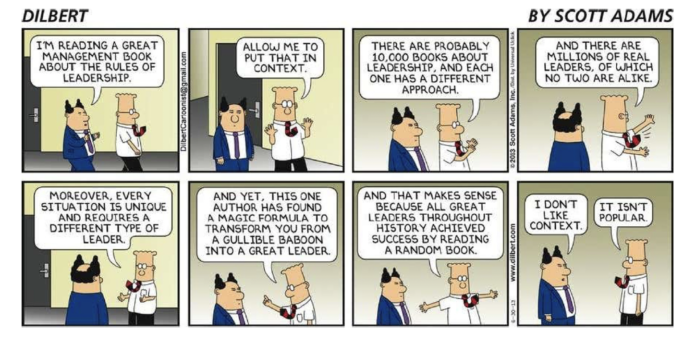By Bob Bennett
‘Chemistry is invaluable. You can have as much talent as you want, but talent without chemistry equals frustration.’ This quote from J.B. Bickerstaff, coach of the Memphis Grizzlies, illustrates that talent and skills are not enough to assure success. It is a truism that morphs into business settings as well.
Many business executives believe they cannot control chemistry, but as another basketball coach, Brian Gregory from the University of Southern Florida reminds us, ‘you can’t really out X-and-O guys in the league…because (everyone) is just really good.’ We need to find players (employees) who provide the skills needed to succeed and we need to create the proper chemistry, a culture, to embrace the quest toward common objectives.
Thirty years ago, when I became Chief Learning Officer at FedEx Express, I was faced with challenges you have, or will, face in your career. I inherited an organization that was considered ‘best in class’ throughout the industry because of its leading-edge technology and employee development programs. One would consider this an ideal situation were it not for the fact that the organization was perceived by our internal customers to not provide significant value. The operating divisions did not see the importance and quality of the services provided by the Learning and Development Department (L&D) in the same way the organization felt these same services were delivered – often with significant differences. Agreement on what services should be provided and the criteria for what was considered an acceptable quality for those services were lacking.
Obstacles were apparent at all levels – employees, customers, operators, and management. These ‘opportunities’ to achieve reconciliation had to be addressed holistically and simultaneously, even in areas where there was agreement. CEOs and senior officers saw talent management as a top priority as did the learning organization. They both understood the importance of employees to achieving success: competitors can replicate your products and services, but they cannot replicate your people. An adequately developed, cohesive, happy, and knowledgeable workforce, therefore, was necessary. There was no agreement, however, on how that should be achieved. The approach to achieving reconciliation was critical.
Two social scientists, Jacob Getzels and Mihaly Csikszentmihalhi, focused on two groups of artists both having the same objective, to draw a still life. One group approached the task by asking: how can I produce a good drawing? The second group asked: what subject would provide a good drawing? A panel of experts evaluating the outcomes agreed the second group’s work was more creative. The experiment is relevant in that the first group was trying to solve a problem whereas the second group was trying to avoid a problem.
Problem solvers and problem finders exist in a business environment as well. The problem solvers have a plan and concentrate on how they can make it work; they seek best practices. The problem finders look at what pitfalls might ‘pop up’ and find ways to avoid them. Both have a significant role in establishing the sustainability of a company if both are used effectively. Their efforts must be balanced and coordinated if we are to maximize everyone’s potential and allow them to break through any limits that have been imposed on them.
Michael S. Hamilton, Chief Learning and Development Officer for Americas at Ernst & Young said that a greater return comes from not being the best in class in your field, but rather by being the best in class at engaging employees.
Keeping all this in mind, the challenge is clear. Provide a focused strategy that proactively: addresses needs, gains and maintains executive support, engages employees and users simultaneously, initiates processes to prioritize efforts, ensures reputable processes and results, establishes and reinforces positive behavior, develops and educates the entire company, and facilitates continuous improvement.
That is why I offer the “PIECES!” strategy as an innovative and alternative approach to conducting business. It is an approach that captures the hearts of people and the mind of business.
Insert Dilbert here (space permitting)
A Better Way
There is a better way to lead that can assure success while facing the fear of change. It has less to do with the tactics of how and focuses on what and why you do things. It is a rather straightforward process that when done well, ensures buy-in, commitment, passion, and results. It does not require that you change yourself, a challenging task; it merely requires you to “Put The PIECES! Together.”
1. Partner: Share responsibility and accountability with customers, employees, vendors and the community to attain common goals and visions and develop mutual trust
2. Increase Flexibility: embrace creativity, technology, and innovation to find a way to provide solutions to particular problems
3. Expand Your Sphere of Influence: lead organizations beyond your department and company, and provide services regardless of if it is included in your job description
4. Calculate Value Add: keep a focus on the bottom-line, evaluating the benefit to company goals and vision, including but not limited to financial
5. Enhance Reputation: strengthen your ‘brand’ and earn the trust of those around you through quality, timely and exceptional results
6. Sustain Results: improve efficiency and effectiveness to find ways to provide the same scope and quality of services previously provided as new responsibilities are added
7. !; continuously develop yourself, and develop and take care of the people who make all this possible
The above provides an internally focused strategy that proactively addresses needs, gains and maintains executive support, engages employees and users simultaneously, establishes a process to prioritize efforts, ensures repeatable processes and results, establishes and reinforces positive behavior, develops and educates the entire company, and facilitates continuous improvement. PIECES! is an approach that captures the hearts of people and the minds of business.

FedEx Express CLO, Retired
bobbennett13@gmail.com
